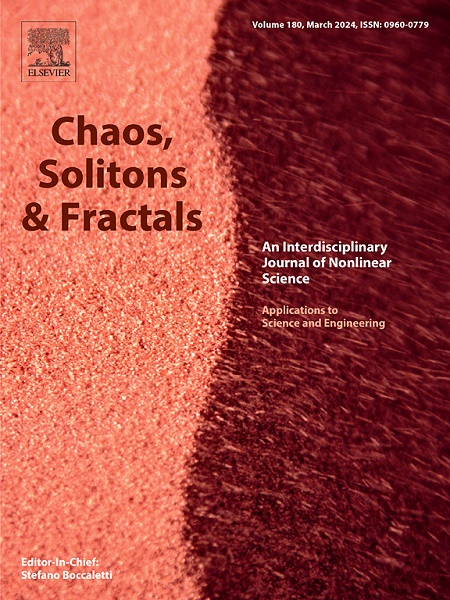复杂网络的最低程度分解
IF 5.6
1区 数学
Q1 MATHEMATICS, INTERDISCIPLINARY APPLICATIONS
引用次数: 0
摘要
关键节点的识别是网络科学的一个基本挑战。基于真实网络的嵌套特性,我们提出了一种称为最低度分解(LDD)的分解方法。该方法在每一步迭代地对程度最低的节点进行剪枝,得到精细化的结构层次。我们严格证明了LDD是著名的k核分解的一个细分。我们进一步提出了所谓的LDD+指数,该指数综合了受LDD指数约束的目标节点及其近邻节点的归一化排名分数。大量关于流行病传播、同步和非线性相互动力学的数值实验表明,LDD+指数比k-core分解和其他已建立的指数更能准确地定位最具影响力的传播者、最有效的控制者和最脆弱的物种。除了识别关键节点外,LDD还可以作为网络可视化的强大工具和网络建模的新标准。本文章由计算机程序翻译,如有差异,请以英文原文为准。
Lowest degree decomposition of complex networks
The identification of vital nodes is a fundamental challenge in network science. Motivated by the nested nature of real networks, we propose a decomposition method termed Lowest Degree Decomposition (LDD). This method iteratively prunes the nodes with the lowest degree at each step, revealing a refined structural hierarchy. We rigorously prove that LDD is a subdivision of the famous k-core decomposition. We further propose the so-called LDD+ index that integrates the normalized ranking scores of the target node and its immediate neighbors subject to the LDD index. Extensive numerical experiments on epidemic spreading, synchronization, and nonlinear mutualistic dynamics demonstrate that the LDD+ index can more accurately locate the most influential spreaders, the most efficient controllers, and the most vulnerable species than k-core decomposition and other well established indices. In addition to identifying vital nodes, LDD can also be used as a powerful tool in network visualization and a novel criterion in network modeling.
求助全文
通过发布文献求助,成功后即可免费获取论文全文。
去求助
来源期刊

Chaos Solitons & Fractals
物理-数学跨学科应用
CiteScore
13.20
自引率
10.30%
发文量
1087
审稿时长
9 months
期刊介绍:
Chaos, Solitons & Fractals strives to establish itself as a premier journal in the interdisciplinary realm of Nonlinear Science, Non-equilibrium, and Complex Phenomena. It welcomes submissions covering a broad spectrum of topics within this field, including dynamics, non-equilibrium processes in physics, chemistry, and geophysics, complex matter and networks, mathematical models, computational biology, applications to quantum and mesoscopic phenomena, fluctuations and random processes, self-organization, and social phenomena.
 求助内容:
求助内容: 应助结果提醒方式:
应助结果提醒方式:


